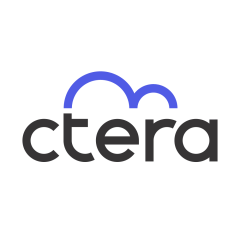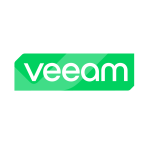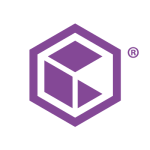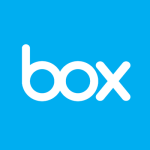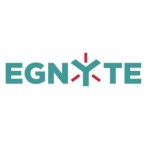What is our primary use case?
We are using the CTERA Enterprise File Services Platform in two areas. The first is as a platform for our customers, providing a modern infrastructure. The second, more sophisticated use case is for internal usage as our internal file server. We have a huge file system. Currently, it is used internally, but in the future, we might prepare the infrastructure or create applications that will be accessible via the Internet, beyond just internal use.
How has it helped my organization?
The most significant benefit is caching. I am providing high-performance NVMe devices for all file systems. Most of the data is stored on an internal S3 cloud, rather than an external one. This internal S3 infrastructure stores all copies of the data, with snapshots for versioning and disaster recovery. The Total Cost of Ownership (TCO) is excellent because we use high-performance storage for mission-critical data, while other data (including voice records and PDFs for customer billing) is stored on more cost-effective infrastructure.
Thanks to caching, after implementation, performance—especially for Citrix VDI access and profiles—improved by 20 to 30 seconds.
Another financial and technical benefit is that we no longer need to rely on external software for backup. We now use the CTERA portal for this. All the snapshots are stored on different S3 storage platform, eliminating the need to pay high licensing fees for tools like Rubrik or Commvault. These tools are also harder to implement and don't offer the convenience of versioning with a simple right-click. Versioning is a great feature, allowing me to restore files from the latest update, bypassing daily backups. Using S3 storage makes it economical and efficient.
Vault is another useful feature. For regulatory compliance, we must retain certain files for seven years, and Vault allows us to store these files without the need for incremental backups. Once a backup is placed in the vault, it is untouchable and cannot be deleted.
CTERA file sync (compressed and deduplicated) is excellent. Additionally, we have two disaster recovery methods: restoring the entire file system through the portal or using storage replication. We test the replication once a year, and we can establish a disaster recovery site in two to three minutes.
Both versioning and replication are critical for meeting our SLAs. Our CTERA Enterprise File Services Platform is fully prepared for disaster recovery. As per our regulations, we must test disaster recovery at least once a year and demonstrate to management that we can establish new sites. The last test showed an RTO of two to three minutes. We haven’t experienced any actual disasters, but regular testing ensures readiness.
Prior to 2018, our infrastructure was unable to even test disaster recovery due to file limitations. For the last five years, we’ve maintained near-zero RTO or even RPO, operating almost asynchronously. Having a very low RTO is critical, and we can reestablish the infrastructure on the new filer in just a few minutes, which represents a substantial improvement.
We’ve also implemented and tested a new feature to prevent ransomware attacks. This is a significant advancement in the NAS world. We recently installed a new version and demonstrated to our CISO how a real ransomware attack could be stopped within seconds, showing that the affected client’s access to the file server was blocked. Fortunately, we haven't faced a real attack, but being able to showcase our protection to management is a significant benefit.
We started seeing benefits immediately after we migrated our Citrix profiles. We had about 2,000 users on our Citrix infrastructure and terminal servers. All login profiles were placed on CTERA. With the previous infrastructure, the login process took 45 seconds, including application startups. After moving the profiles to CTERA, we observed an improvement of at least 20 to 25 seconds.
Another benefit is storage reclamation. We use Dell NVMe PowerMax, which is extremely costly for a small portion of our data. With the CTERA platform, we gain excellent performance for files in the cache, while archived files on S3 are still easily accessible. This combination allowed us to observe improvements from day one. Additional benefits include ransomware protection, versioning, and reduced software costs for backups. We started with 30 to 50 terabytes, and now we manage nearly 300 terabytes.
Choosing CTERA in 2018 was risky, as it was just a startup at the time. However, from my perspective, it has proven to be an excellent decision.
What is most valuable?
First and foremost, flexibility is highly valuable. I can separate different workloads across various hardware platforms depending on the implementation, without being locked into a particular vendor’s hardware. For example, if I need a special filer for home directories to optimize performance or accessibility, we can create separate virtual machines. We also maintain a large archive because we need to store call recordings from our call center for seven years due to regulatory requirements. By using different virtual machines, we can separate data according to implementation needs and SLAs.
Managing the data is simple since the platform operates on a virtual machine. The interfaces are user-friendly, and after two to three hours of training, our support staff is capable of using the interface to assist customers with file restoration. Adding new infrastructure, servers, and virtual machines is straightforward.
What needs improvement?
The platform is releasing new features at a fast pace, which sometimes leads to version updates every three to six months. Although updates are generally not complex, it is challenging to stop the production environment during these updates, even if the downtime is just a few minutes. This is a common challenge across all NAS providers.
From my perspective, the most important area for improvement is developing a method to perform updates without affecting customer production environments. Additionally, there are some cache size limitations that might become problematic for future use cases, though they don’t impact current applications.
Collaboration for NFS and SMB protocols could also be enhanced. Although this issue isn't specific to CTERA, it is something we are working on together to improve.
The quality of the versions has improved, but occasional issues still arise. All solutions face this challenge, but we hope to see a continued reduction in the number of bugs. That said, we haven't had any major production problems in the last four years, and we appreciate how responsive CTERA is to our issues. We engage in brainstorming sessions together, and we value this relationship.
For how long have I used the solution?
We started using CTERA for internal use in 2018. This is now our sixth year in full production. Over that time, we have accumulated about 260 terabytes of S3 storage, 10 virtual machines, and billions of files.
What do I think about the stability of the solution?
We have experienced no downtime over the last four years where customers couldn’t access data. Occasionally, we’ve encountered synchronization issues, but they have not impacted production.
How are customer service and support?
We hold weekly sessions to review new features and discuss open tickets. I sometimes work directly with CTERA's engineering team when we need new developments. They value our input, and customers like us can provide different perspectives.
Their support team is highly accessible, and they can connect directly to our system. When we need immediate assistance, they provide it promptly.
I would rate them nine out of ten. One of CTERA’s best features is its support and engineering teams.
How would you rate customer service and support?
Which solution did I use previously and why did I switch?
Our previous infrastructure was based on EMC’s VNX system. After six years with CTERA, we have no plans to replace it.
The transition project was handled by me and one other member of my team. We migrated approximately 100 million files and 50 terabytes of storage from VNX to CTERA.
CTERA is different from other systems. It is a global file system, whereas solutions like NetApp and Dell are more focused on the enterprise without being global. From my experience, many of the features and flexibility I have with CTERA cannot be achieved with NetApp or Dell, largely because CTERA is a software solution and not tied to specific hardware.
This flexibility allows me to separate storage across different network segments. Since we are a telecommunications company with sensitive external customer segments, centralizing everything would be inefficient. With CTERA, I can deploy small virtual machines in each segment and occasionally replicate changes to S3 for backup without additional costs. It’s more efficient, and I can use various types of storage.
Other reasons for the switch were improvements in DRP (Disaster Recovery Plan), financial savings, and performance enhancements.
How was the initial setup?
Initially, the migration was manual. When we started using CTERA, the migration tools they now provide weren’t available. With the current version, customers can migrate from other solutions like NetApp or Dell using these new tools. However, in 2018, we had to follow a traditional manual process, without external assistance, relying solely on my team.
Setting up CTERA and handling the logical integration was challenging because it was a new solution. It took about six months. The concept was new to us, and we decided to proceed slowly, starting with certain folders and Citrix profiles, which were critical to the organization. After one year, we reached stability and began moving the rest of the infrastructure without disrupting the system. Our careful planning was the right approach.
The CTERA support team helped us create the first virtual machine and configure it. Today, they provide various tools, but at the time, everything was done manually. After setting up the first virtual machine and connecting to the portal, we handled the migration and access configurations. We also discovered some protection issues, such as instances where even administrators were unable to move certain files, which required critical manual intervention. That was the most difficult part of the process. The biggest obstacle to the project was copying files, not establishing the system. The interfaces were easy to understand, and today, the migration tools are available and much improved. You can now understand what’s happening with your old infrastructure and plan the best path forward for a smooth cutover.
I manage the storage team. Two team members handle all high-end storage, NAS storage, and object storage, while two others focus on Linux and Unix systems. Overall, three of us, including myself, work with a vast number of platforms.
CTERA management is incredibly smooth, and the experience is markedly different from other NAS infrastructures. Despite having a small team, we have managed to expand our CTERA use cases by at least 100% year over year. Starting with just two file servers, we have grown to ten servers in six years, without increasing headcount. This demonstrates how easy it is to expand and add new features using this solution.
We are planning to implement Vault due to regulatory requirements and are also introducing AI-based antivirus and other features. One of the new capabilities is the ability to create a new filer using the disaster recovery infrastructure in just one minute. This allows us to move all customers to the new filer and restore their files as needed. Last week, we created a new version of our public folder, which contains 50 million files and 35 terabytes.
What's my experience with pricing, setup cost, and licensing?
It’s hard to compare CTERA to others. If, for any reason, my organization decided to replace it with a solution like NetApp, the project would be extremely expensive due to the hardware requirements and the sheer volume of data involved in the migration.
It’s also difficult to compare costs directly since replicating the same model with high-performance storage or other custom features would be extremely costly. However, in terms of Total Cost of Ownership (TCO), CTERA is one of the best solutions available in Israel.
What other advice do I have?
I recommend starting with a solid disaster recovery plan. For customers like us, who share two or three sites internally and not over the Internet, this is essential. Also, focus on ransomware protection early on. Test your recovery plan to ensure it works.
If you need an archive system for long-term data retention due to regulations (e.g., seven to ten years), build a separate vault feature rather than mixing it with mission-critical tasks like Citrix profiles, which require higher performance. Office files, by contrast, have different performance needs. CTERA is a great software solution, but ensure you plan your hardware solution accordingly.
For migration, take a step-by-step approach. While there are migration tools available, be prepared to deal with potential permission issues.
Overall, I would rate the CTERA Enterprise File Services Platform a nine out of ten due to the benefits we’ve achieved. We’ve reduced hardware and external software costs, and the solution has provided great value to the company. While there’s always room for improvement, it remains one of the best solutions on the market.
Disclosure: PeerSpot contacted the reviewer to collect the review and to validate authenticity. The reviewer was referred by the vendor, but the review is not subject to editing or approval by the vendor.

